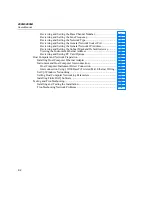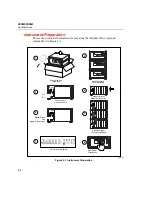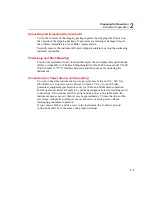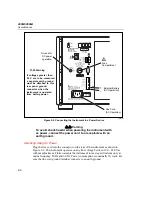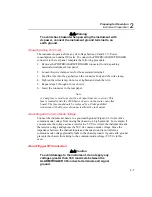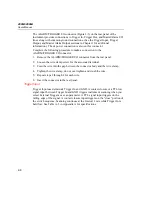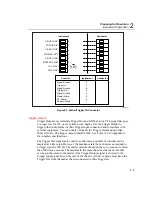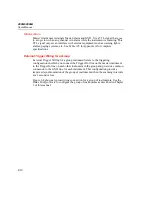
Overview
Operating a 2680 Series Data Acquisition System
1
1-15
Group Operations
Using Fluke DAQ, you can group scan data from multiple instrument modules and
sources. Fluke DAQ can record data from all sources in the group into a single .csv
data file.
When grouping data, one module or instrument is designated as the Master. The
Master determines the times of the scans in the .csv data file. Scan data can be
grouped while scanning, or after scanning has ended using the Export feature.
Scanning and Logging
When a scan is triggered, the instrument scans the 20-120 analog channels, scans
the Digital I/O channels and totalizer and calculates the 60 computed channels. It
stores the resulting time-stamped data in a scan record. Scans can be triggered
from several sources:
•
Interval Trigger, where an elapsed interval timer triggers a scan.
•
External Trigger, where an external input (ground or logic low) applied to the
instrument, the Trigger In signal triggers a scan.
•
Alarm Trigger, where a channel going into alarm starts a scan.
Fluke DAQ software obtains scan records from the instruments and logs the data
into a history database and optionally into a .csv file. Each scan record consists of
a timestamp, values from all configured and recording analog channels and
computed channels, and the alarm states, plus the Digital I/O line status and the
count of the totalizer if the Digital I/O Relay module is in the instrument.
A number of factors can affect the actual scan rate in the 2680A/2686A
instruments. These include:
•
The number of active modules
•
The number of active channels
•
Use of the DIO for alarms or as a totalizer/counter
•
Writing to a PC card
•
Network data rates.
There is a 2.6 ms overhead associated with accessing each module in a instrument.
There is overhead associated with reading each channel. For an FAI module, it is
about 1.4 ms per channel. Consequently, including the module overhead, when
reading one FAI with 20 active channels, you can get the scanned data in 30 ms or
667 channels per second. If you read only one channel, it takes 4 ms for a rate of
only 250 channels per second. For high-speed measurements, it is faster to use
fewer channels on each module. However, when a single channel and minimum
scan interval are used on four or more FAIs, the internal program may not keep up
with the scan data rate and some data could be lost.
Summary of Contents for 2680A
Page 8: ......
Page 14: ...2680A 2686A Users Manual vi ...
Page 20: ...2680A 2686A Users Manual 1 2 ...
Page 98: ...2680A 2686A Users Manual 2 62 ...
Page 196: ......
Page 228: ...2680A 2686A Users Manual A 32 ...
Page 236: ...2680A 2686A Users Manual C 4 ...
Page 242: ...2680A 2686A Users Manual D 6 ...
Page 274: ...2680A 2686A Users Manual 6 ...




















